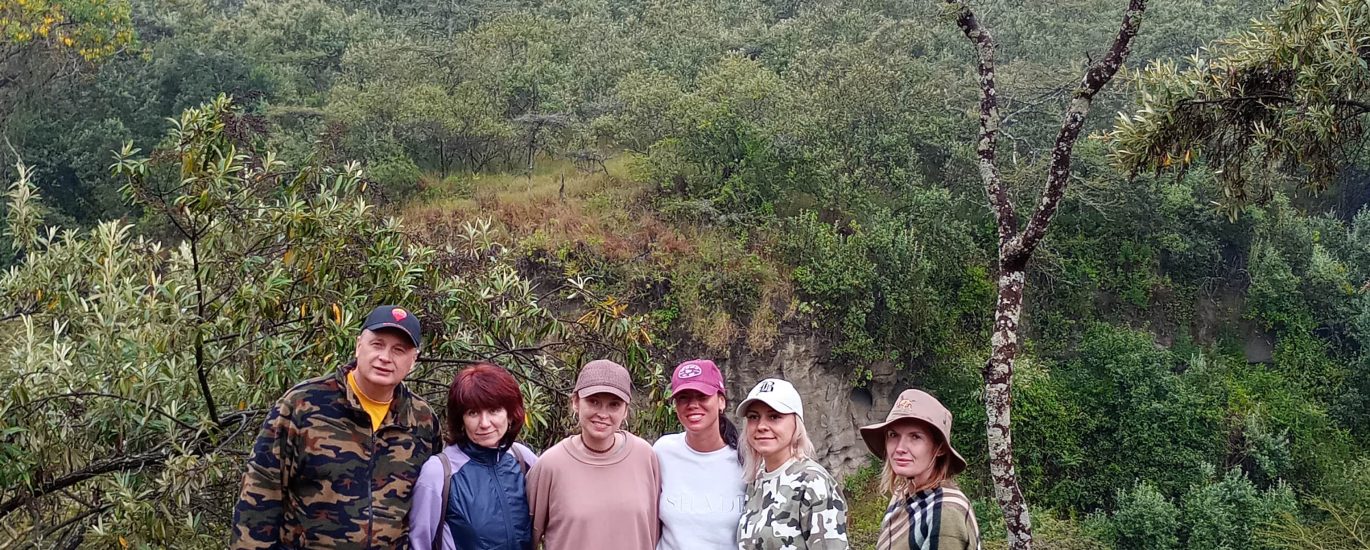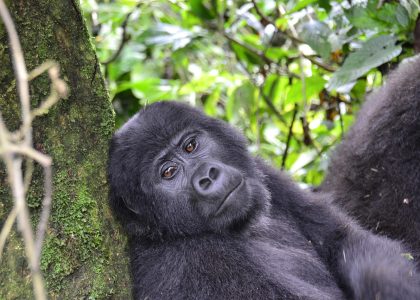In our eighth edition of our Wazimba Travel Tanzania series, let’s venture beyond the famous safari circuits and coastal hotspots to discover some of Tanzania’s best-kept secrets. While the Serengeti and Zanzibar rightfully command attention, this remarkable country harbors extraordinary experiences far from the typical tourist paths. These hidden gems offer both seasoned Africa travelers and first-time visitors authentic encounters with Tanzania’s diverse landscapes, wildlife, and cultures—often with minimal crowds and maximum wonder.
As a local tour operator with deep roots in East Africa, Wazimba Travel specializes in unlocking these hard-to-reach destinations. Our knowledgeable and experienced safari guides bring not just transportation but crucial local expertise to these remote areas—from knowing which mountain trails offer the most spectacular views to understanding exactly when Kitulo’s wildflowers reach their peak. Many of these hidden gems require specialized planning, reliable vehicles, and connections with local communities—all areas where our team excels. While we love showing travelers Tanzania’s famous highlights, there’s something special about helping you discover the places that don’t make it onto most postcards.
Mountain Escapes: Tanzania’s Forgotten Highlands
Usambara Mountains
Nestled in Tanzania’s northeast, the Usambara Mountains rise dramatically from the surrounding plains, creating a cool, misty retreat that feels worlds away from safari dust or beach sand:
- Ancient forests harbor extraordinary biodiversity, including plants and birds found nowhere else on Earth
- Charming colonial-era towns like Lushoto offer glimpses into Tanzania’s German colonial heritage
- Local guides lead hikes to panoramic viewpoints where you can see all the way to the Indian Ocean on clear days
- Farm stays and small guesthouses provide warm hospitality in refreshingly cool mountain air
The Usambaras offer perfect balance to wildlife-focused itineraries, with opportunities to walk through rural villages, visit butterfly farms, and connect with local communities that see relatively few foreign visitors.
Udzungwa Mountains
Sometimes called the “Galapagos of Africa,” the Udzungwa range represents one of Eastern Africa’s most remarkable biodiversity hotspots:
- Day hikes lead to stunning waterfalls cascading hundreds of meters down forested slopes
- Seriously lucky visitors might glimpse the Udzungwa red colobus or Sanje mangabey—primates found nowhere else on Earth
- Bird enthusiasts discover specialized mountain species rarely seen elsewhere
- The mountains’ dramatic eastern face rises abruptly from lowland plains, creating spectacular vistas
What makes Udzungwa special isn’t just the natural beauty but the feeling of genuine exploration—these mountains receive just a fraction of the visitors that crowd northern Tanzania attractions.
Wilderness Frontiers: Tanzania’s Remote Protected Areas
Katavi National Park
In Tanzania’s far western reaches lies Katavi, the country’s third-largest national park and perhaps its most gloriously wild:
- Vast floodplains transform from lush grass seas to dusty wildlife magnets as seasons shift
- Enormous hippopotamus pods crowd shrinking rivers during dry seasons
- Lion, leopard, and wild dog sightings without another vehicle in sight
- Basic but comfortable camps cater to wilderness lovers seeking authenticity over luxury
Reaching Katavi requires effort—either fly-in safaris or serious overland journeys—but those who make the trek find themselves in a Tanzania that feels unchanged for centuries, where wildlife dramatically outnumbers humans.
Rubondo Island National Park
In the southwestern reaches of massive Lake Victoria lies one of Tanzania’s most unusual protected areas—an island sanctuary where introduced chimpanzees now roam wild:
- Pristine forests cover nearly 80% of this 240-square-kilometer island
- Wildlife includes not just chimps but sitatunga antelope, otters, and incredible birdlife
- Fishing for Nile perch in surrounding waters offers thrilling battles with potential 100kg giants
- Canopy walkways and forest trails provide peaceful exploration opportunities
Rubondo receives barely 1,000 visitors annually, meaning you might have entire beaches and forests to yourself. It’s perfect for travelers seeking genuine wilderness solitude combined with comfortable accommodation.
Cultural Treasures: Tanzania’s Historical Wonders
Kilwa Kisiwani
Along Tanzania’s southern coast lie the haunting ruins of what was once East Africa’s most powerful city-state:
- Crumbling but magnificent stone structures dating back to the 13th century
- A UNESCO World Heritage site where sultans once controlled gold and ivory trade
- Atmospheric exploration among baobabs and ancient walls without tour groups
- Local boat transfers add to the sense of discovery
Reaching Kilwa requires dedication—it’s about 300km south of Dar es Salaam on roads of varying quality—but those who make the journey step into living history rarely experienced by most Tanzania visitors.
Kondoa Rock Art Sites
In Tanzania’s central highlands, ancient artists left extraordinary galleries of rock paintings dating back thousands of years:
- Hundreds of shelters contain images of humans, animals, and enigmatic symbols
- UNESCO recognition highlights their global importance
- Local guides share both scientific knowledge and traditional interpretations
- The surrounding landscapes offer beautiful hiking opportunities
The Kondoa sites provide fascinating windows into prehistoric African life with a fraction of the crowds found at other UNESCO sites worldwide.
Natural Wonders: Tanzania’s Geographical Surprises
Kitulo Plateau
High in Tanzania’s southern highlands lies what locals call “God’s Garden”—an extraordinary alpine meadow bursting with wildflowers:
- Over 350 plant species including ground orchids create spectacular seasonal displays
- Views extend across valleys to distant mountain ranges
- Endemic birds and chameleons add wildlife interest to botanical wonders
- Cool mountain air offers refreshing escape from Tanzania’s warmth
Kitulo received national park protection specifically for its flowers—a rarity in Africa—and remains wonderfully uncrowded even during peak blooming periods from December through April.
Olduvai Gorge
Between the Serengeti and Ngorongoro lies a seemingly unassuming ravine that changed our understanding of human origins:
- The site of Mary and Louis Leakey’s groundbreaking fossil discoveries
- A small but informative museum contextualizes the gorge’s importance
- Guided walks reveal where our earliest ancestors left their traces
- The surrounding landscapes feature dramatic volcanic formations
While many northern safari circuits pass near Olduvai, surprisingly few travelers take time to properly explore this cradle of humankind—those who do gain profound appreciation for Tanzania’s place in human history.
Authentic Connections: Beyond Tourism Bubbles
Rural Homestays
Throughout Tanzania, community tourism initiatives offer genuine cultural immersion:
- Family stays in traditional homes from the coffee lands of Kilimanjaro to fishing villages along Lake Victoria
- Participation in daily activities from farming to cooking to craft making
- Income that directly supports local communities
- Relationships that often become trip highlights
These experiences vary widely in comfort and facilities, but all offer authentic connections impossible in conventional tourism settings.
Local Markets
Tanzania’s vibrant markets offer windows into daily life far from tourist zones:
- Weekly gatherings in small towns bring surrounding communities together
- Fresh produce, handcrafted items, and everyday goods create colorful scenes
- Friendly interactions with locals who rarely encounter tourists
- Photography opportunities capturing genuine Tanzanian life
The key to market visits is respectful engagement—asking permission for photos, attempting a few Swahili greetings, and perhaps purchasing small items from local vendors.
Planning Your Off-Track Tanzania Adventure
Getting There
Reaching Tanzania’s hidden gems often requires flexibility and determination:
- Consider domestic flights to regional airports for distant locations
- Allow extra travel days for remote destinations
- Combine off-track experiences with more accessible highlights
- Research seasonal road conditions for self-drive adventures
When to Go
Timing varies by destination:
- Mountain areas remain accessible year-round, with coolest temperatures June-August
- Remote western parks are best visited during dry season (June-October)
- Kitulo’s famous wildflowers peak December-April
- Cultural sites can typically be visited year-round
Practical Considerations
- Pack versatile clothing for diverse environments from cool mountains to humid coastlines
- Bring sufficient cash for areas without reliable ATM access
- Prepare for basic accommodations in more remote regions
- Consider hiring specialized guides for maximum appreciation of unique destinations
Tanzania’s hidden treasures offer the increasingly rare opportunity to experience extraordinary places without crowds. They reward travelers willing to venture beyond famous names and iconic postcard views with authentic encounters, genuine wilderness, and the profound satisfaction of discovering your own personal Tanzania.
What truly sets Wazimba Travel apart is our extensive network of local service operators and community partnerships throughout Tanzania. Over the years, we’ve built strong relationships with small guesthouses in the Usambara Mountains, experienced trekking guides in remote highlands, boat operators along the southern coast, and cultural ambassadors in traditional villages. These connections not only make the logistically challenging possible, but they also ensure your experience goes deeper than what most visitors experience.
In our next article, we’ll explore the practicalities of navigating Tanzania, from transportation options to accommodation choices and safety considerations. Until then, start dreaming about your own off-track Tanzanian adventure!
Have questions about Tanzania’s hidden gems? Looking to include some of these secret spots in your itinerary? Our team at Wazimba Travel loves helping adventurous travelers discover these special places—just reach out for personalized advice on creating a journey that combines both iconic highlights and secret treasures. With our local knowledge, experienced guides, and extensive network of trusted service partners throughout Tanzania, even the most remote corners of the country become accessible without sacrificing comfort or peace of mind. Our connections with local operators, from mountain guides to boat captains, ensure authentic experiences that support Tanzania’s communities while creating unforgettable memories for our travelers.






